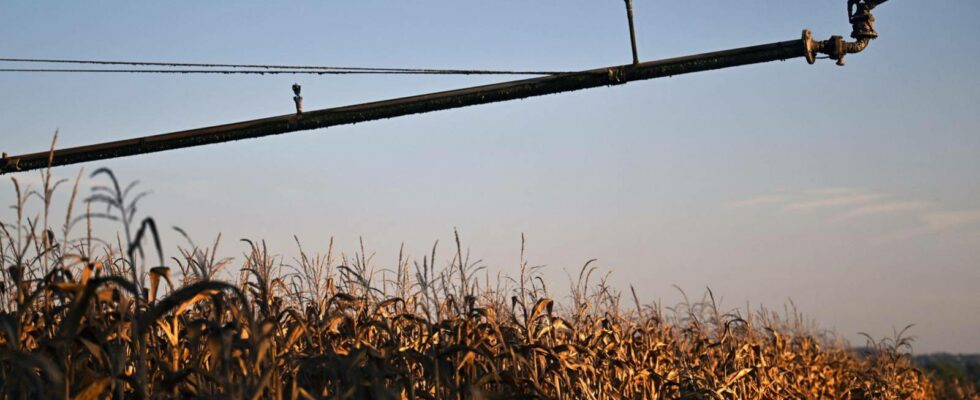(AFP / OLIVIER CHASSIGNOLE)
After a surge in their profits with the surge in prices of wheat, corn and oilseeds in 2021 and 2022, the giants of agricultural trading have landed softly in 2023 and are preparing for a less auspicious environment for their activities.
Archer Daniels Midland (ADM), Bunge, Cargill and Louis Dreyfus – the “ABCDs” that dominate the world’s grain trade – “tend to thrive when there is a lot of disruption or volatility in the markets,” Arun recalls. Sundaram, agri-food specialist for CFRA.
What was not lacking between the Covid pandemic, which disrupted supply chains, the invasion of Ukraine by Russia, which raised fears for the exports of these two major producers, and the generalized inflation.
For example, trading houses were able to buy grain from farmers and resell it three months later at higher prices, with some critics accusing them of fueling speculation on agricultural markets.
Since then, cereal prices have come down from their peaks, harvests have been abundant in 2023 and global cereal stocks are expected to reach a new record at the end of this campaign according to the United Nations Agricultural Organization, FAO.
The conflict between Ukraine and Russia continues and the transport of goods is still sporadically disrupted, with attacks launched by Yemeni Houthi rebels on ships in the Red Sea for example.
But overall, “the markets have become much calmer,” notes Arun Sundaram. “The fear now is more of having too much supply at a time when demand is slowing down.”
Food manufacturers are selling less, the economy of China, a major importer of cereals, is struggling and many consumers are starting to abandon pork for chicken, which eats less soybean meal, notes the analyst .
– Helped by biofuels –
In this type of context, “farmers tend to hold back their harvests in the hope that prices will rise, and trading houses can’t do much about it,” said Seth Goldstein, agricultural sector analyst for Morningstar.
Louis Dreyfus (LDC), which published its annual report on Thursday, saw its turnover fall by 16% in 2023 to $50.6 billion. The group still managed to stabilize its net profit, at 1.01 billion.
ADM saw its turnover fall by 8% to $93.94 billion, and its net profit fall by 20% to $3.48 billion, according to its results published in mid-March. And the company expects a further decline in its profits this year due in particular to a drop in margins in soy crushing and an increase in its costs.
“We know that 2024 will be more complicated than 2022 and 2023,” warned its boss Juan Luciano during a conference call.
At the beginning of February, Bunge revealed a turnover down 11%, which did not prevent it from seeing its net profit rebound by 39% to $2.2 billion, after a decline of 21% in 2022. .
The group then warned that its profits for the current year would decline, also due to the drop in margins in oilseed crushing.
Its general manager Greg Heckman had also stressed during a conference call that it was enough for a “climate event” to tighten the situation between supply and demand, and in turn, see “the return of volatility” on the markets.
As it stands, he added, the courses should “stimulate demand”, the question being “whether this will happen quickly”.
Cargill, which does not publish its accounts, had just indicated in August that its turnover had increased by 7% to 177 billion dollars for the twelve months ending in May 2023. But according to Bloomberg, its net profit fell by 43%, to $3.81 billion over this period.
Overall, however, profits “remain higher than before the pandemic,” notes Arun Sundaram. The ABCDs benefit in particular, according to him, from the growing demand for biofuels, a new source of income.
